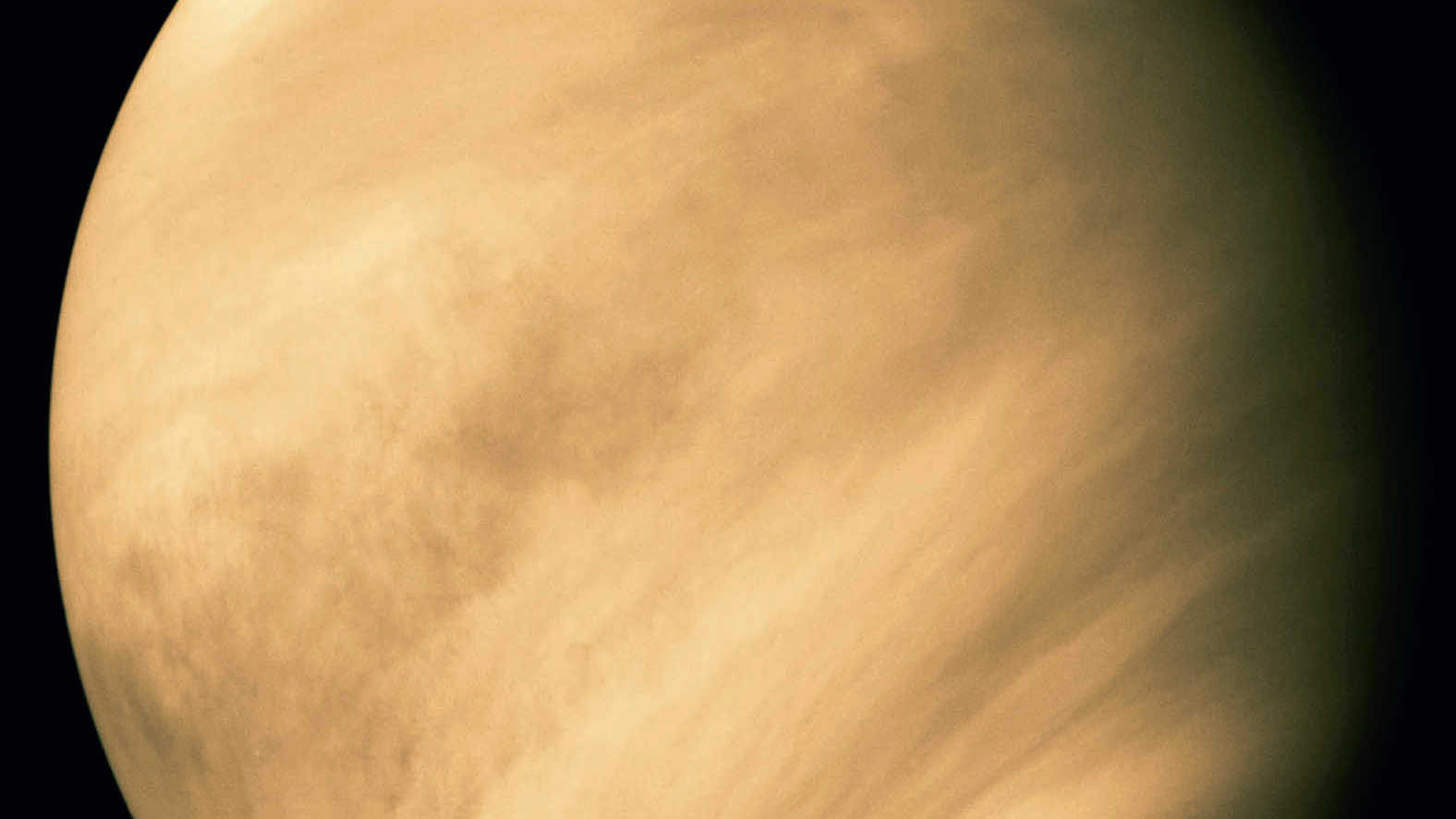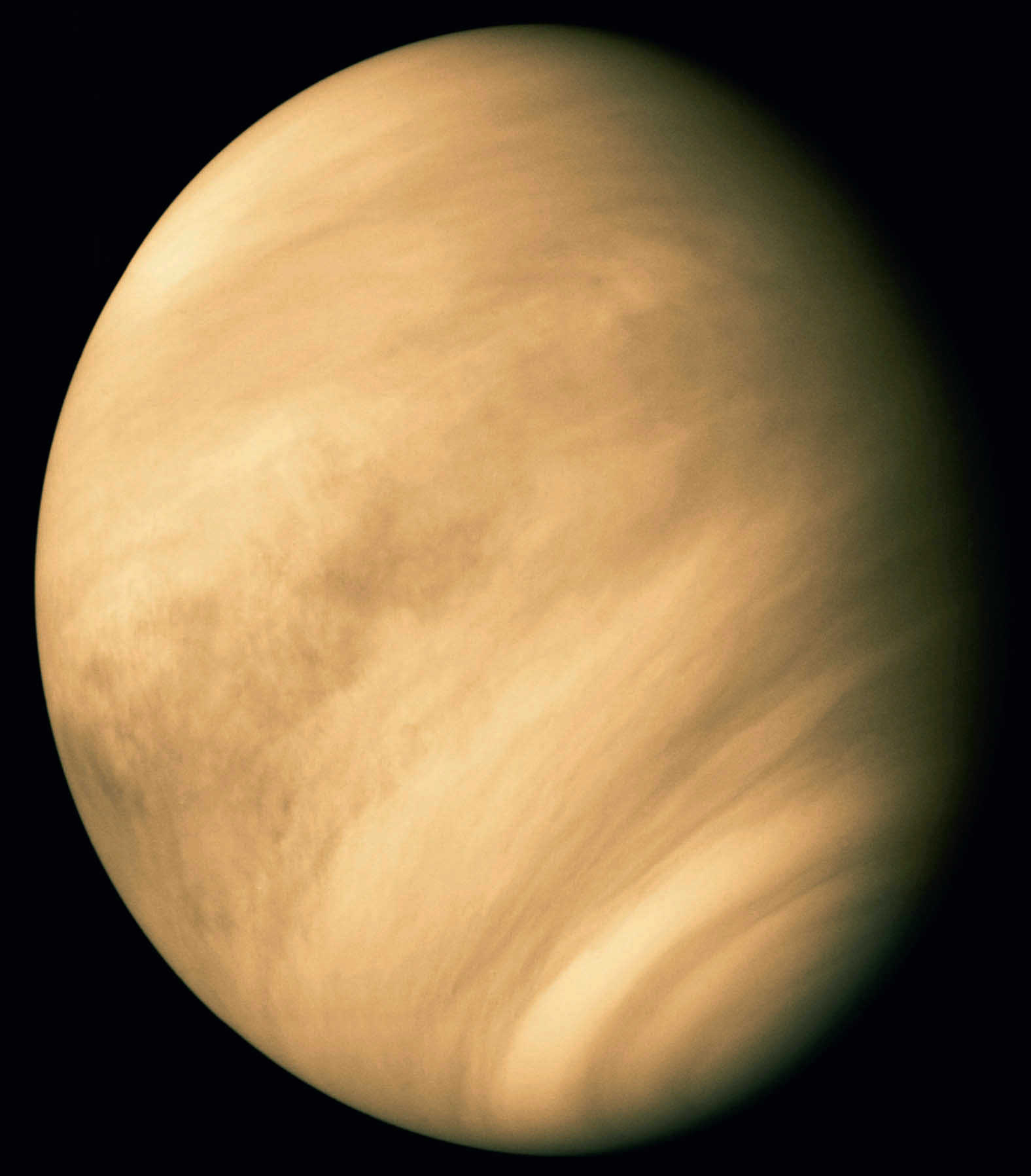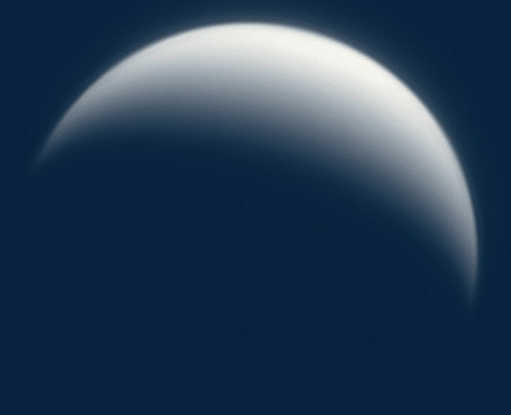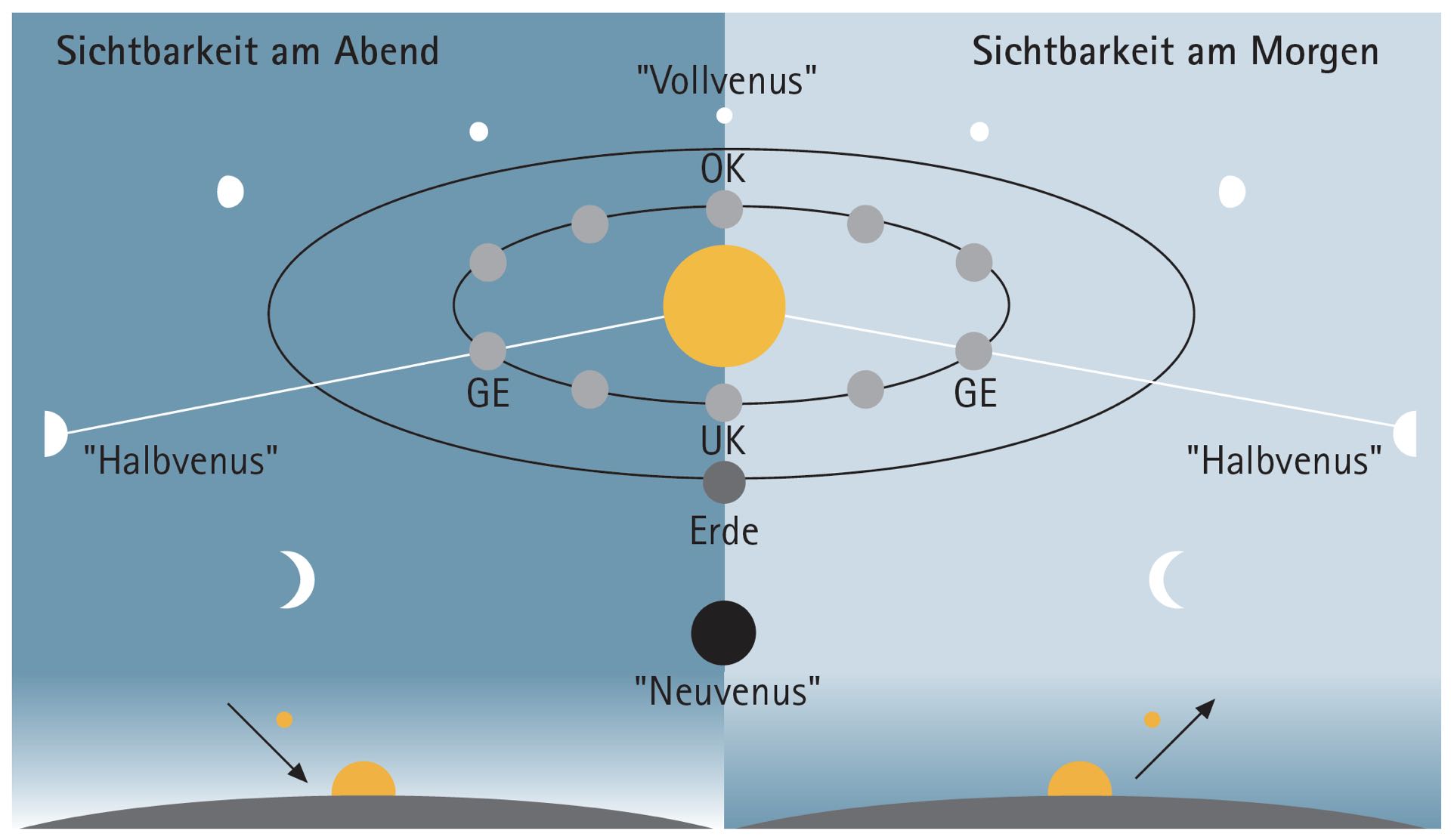The many faces of the goddess of love
Venus shines brighter than any star, but that's not all: just like the Moon, Venus has phases that you can observe.
 Calvin J. Hamilton
Calvin J. HamiltonVenus and the forms its phases take
 Venus as seen by the American space probe Mariner 10 in February 1974. The cloud structures are not visible in this detail from Earth. Calvin J. Hamilton
Venus as seen by the American space probe Mariner 10 in February 1974. The cloud structures are not visible in this detail from Earth. Calvin J. HamiltonVenus is one of the most striking celestial objects. Early morning or early evening, it shines with a brightness unmatched by any other star or planet. It can even be observed in the daytime sky. Perhaps this planet’s extraordinary radiance was the reason for it being named after the Roman goddess of love and beauty.
Since Venus is within the Earth's orbit, unlike the planets beyond our orbit, it can never be opposite the Sun in the sky, but can only move at a certain angle to it. This angular separation is called elongation. Venus’ maximum separation from the Sun is 48°. At this point it reaches its so-called greatest elongation.
Venus is never visible in the middle of the night
 Photograph of the waning crescent Venus in the daytime sky. Mario Weigand
Photograph of the waning crescent Venus in the daytime sky. Mario WeigandWhy can we never observe this planet all night long? Depending on whether the planet is orbiting to the west or east of the Sun, we see Venus for a short time either in the western evening sky after sunset or before sunrise in the eastern morning sky. If Venus is exactly between the Sun and the Earth, this position is called inferior conjunction, when it’s behind the Sun, this is known as superior conjunction. During these two possible conjunctions, the planet cannot usually be observed.
Changing phases
Venus orbits the Sun inside the Earth's orbit. Therefore, like the Earth's Moon, its phases take a range of forms from full to crescent. A few weeks after it was in superior conjunction, the planet becomes visible as a small, almost full disc. Then, as its distance from the Sun increases, the proportion of the illuminated surface decreases and at the same time its apparent size increases. Venus is moving towards Earth. At its greatest elongation east, a half-Venus can be seen in the evening sky, it wanes further to a large but narrow sickle, and is no longer visible during the inferior conjunction as it enters the new-Venus phase.
Only during a rare Venus transit, when the planet passes in front of the solar disc, can it be observed at this time. When Venus reappears in the morning sky, the entire sequence is repeated in reverse: Venus appears as a large waxing sickle, becoming a smaller half-Venus at the greatest elongation west. Finally, it disappears behind the Sun in its full-Venus phase at superior conjunction. Venus is moving away from Earth in this second part of the cycle. It takes 225 days to complete its orbit around the Sun (see also Planets News, page 33).
Practical tip
Observing Venus
The changes in shape during the various phases is visible even with a small telescope. If you leave a few days between each observation you can easily follow the progression. A so-called neutral density or grey filter can be helpful for this, as it will reduce Venus’ brightness making the phases more visible. Observing Venus during the day is also a special experience. Morning visibility during the greatest elongation west is a good way to get started. Here you can try to keep the Venus in view for as long as possible, as the daylight gets ever brighter. Distinctive landmarks such as trees, rooftops, pylons or even the Moon can help you find Venus again if you lose sight of it. This way you still have a good chance to see the small point of light, even if the Sun rose long ago.
 The different positions of Venus and the forms of its phases. (OK: superior conjunction, UK: inferior conjunction, GE: greatest elongation)
The different positions of Venus and the forms of its phases. (OK: superior conjunction, UK: inferior conjunction, GE: greatest elongation)Author: Lambert Spix / Licence: Oculum Verlag GmbH
